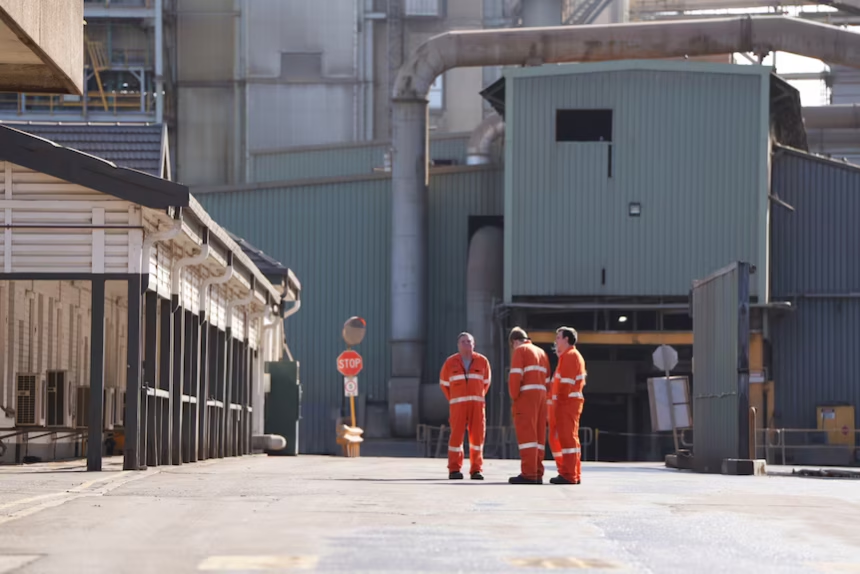Australia’s Metals Industry Faces Unprecedented Challenges Amid Bailouts and Global Competition
Australia’s metals industry is currently navigating turbulent waters, with recent bailouts highlighting the sector’s vulnerabilities. The Queensland government has joined forces with federal and state authorities to inject over $3.1 billion into various smelters and refineries across Australia. This financial lifeline comes as the industry grapples with intense competition from China, which has significantly ramped up its production of critical minerals, leading to a decline in prices that Australian facilities struggle to match.
The Scale of Government Intervention
The recent bailout in Queensland is not an isolated incident. It follows substantial financial support for smelters in South Australia, Tasmania, and other regions. The federal government has taken the lead in negotiations for these support packages, but it has also mandated that state governments contribute half of the funding. This collaborative approach underscores the urgency of the situation, as many facilities are operating at a loss and require time to adapt to changing market conditions.
Energy prices have emerged as another critical factor complicating the landscape for Australian smelters. The Coalition has pointed fingers at “destructive climate policies” for escalating power costs, which have further strained the industry. Shadow Resources Minister Susan McDonald remarked, “This is not the first smelter that’s been bailed out, and it won’t be the last,” indicating a grim outlook for the sector.
Competitive Pressures from China
The competitive landscape has shifted dramatically, primarily due to China’s aggressive expansion in the critical minerals market. The country has not only increased its own supply but has also subsidized domestic smelting and refining operations. This has created a supply glut, making it increasingly difficult for Australian facilities to compete.
In Whyalla, for instance, a steelworks that supplies a significant portion of Australia’s construction steel received a $2.4 billion bailout aimed at transitioning to low or zero-emission steel production. Similarly, Nyrstar in Port Pirie and Hobart was granted $135 million to enhance its production of essential materials like antimony and bismuth, which are crucial for electronics and renewable technologies. Most recently, Glencore’s copper smelter and refinery in Mount Isa and Townsville received a $600 million boost.
The Role of Global Market Dynamics
While the Australian government and industry leaders have attributed the challenges to rising energy costs, many economists argue that China’s market maneuvers are the primary culprit. The Lowy Institute’s Robert Walker noted that China’s strategic investments-estimated at $87 billion-have significantly influenced the prices of critical minerals like copper, nickel, and lithium.
China’s dominance in the global market is alarming; it controls nearly 90% of rare earth processing and production capacity. This monopoly raises concerns about supply chain vulnerabilities, especially as Western nations strive to develop independent supply chains for critical products ranging from electric vehicles to defense equipment.
The Broader Implications of Bailouts
The bailouts are not merely about preserving jobs; they also reflect a strategic imperative for Australia. Industry Minister Tim Ayres emphasized that maintaining an industrial base in regions like Mount Isa is essential for future investments in critical minerals. The government views these interventions as necessary for ensuring national economic resilience and strategic interests.
However, the situation is complex. While the bailouts may temporarily safeguard approximately 3,500 direct jobs, they also raise questions about the long-term viability of these facilities. The Australian government is bracing for more requests for financial assistance, indicating that the challenges facing the metals industry are far from resolved.
A Geopolitical Landscape
The geopolitical implications of Australia’s critical minerals sector cannot be overstated. As nations like the United States seek to reduce their reliance on China, they are looking to Australia as a potential partner. Recent reports suggest that the U.S. is interested in acquiring stakes in Australian critical mineral companies, which could serve as leverage in negotiations for tariff exemptions and other national priorities.
The upcoming meeting between Australian Prime Minister Anthony Albanese and U.S. President Joe Biden is expected to focus heavily on these issues, underscoring the strategic importance of Australia’s critical minerals in the global market.
Conclusion
As Australia grapples with the challenges facing its metals industry, the recent bailouts serve as a stark reminder of the complexities involved in global supply chains and market dynamics. With China continuing to exert its influence, the Australian government must navigate a delicate balance between supporting its domestic industry and addressing the broader geopolitical landscape. The future of Australia’s metals sector will depend not only on immediate financial interventions but also on long-term strategies that ensure competitiveness and resilience in an increasingly interconnected world.











